Rivers for Life meeting in TemacapulinImagine a mixture of a dam protest, legal seminar, solar panel installation and river dance. Imagine hundreds of grassroots activists from all around the world coming together in a remote rural community for five days of discussions, skill-shares and parties. This is what just happened at the “Rivers for Life 3” meeting in Temacapulin, Mexico. Read this eyewitness report by an inspired and exhausted participant.

Date: Friday, October 1, 2010 - 14:28
Temacapulin cathedralMexican sun over the Rio Verde,Red chili drying on cobbled streets,Musica Ranchera sobre la plaza,Excited kids waiting for their guests.
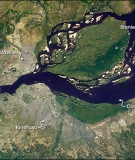
Date: Wednesday, September 29, 2010 - 17:55
NASAToday, a team of international scientists published the first ever global review of human impacts (such as pollution, dam building and agriculture) on the world’s rivers. Their findings are not pretty: Rivers that serve nearly 80 percent of the world’s population suffer from serious threats to human water security and biodiversity. In spite of billions of dollars in investment, the threats to river ecosystems are particularly high in Europe and the United States. The good news is that smart and cost-effective solutions are available.

Date: Thursday, September 23, 2010 - 17:59
Goats have often had a bad rap. In biblical times, villagers burdened scapegoats with their sins and sent them into the desert. The devil is often portrayed with a goat’s head or hooves. And the proverbial journey from hero to goat is rarely a happy one. Goats, the ultimate survivors, have weathered all storms and outlived all metaphors. In Italy’s Antrona Valley, a stone’s throw from the Swiss border, you can now find them grazing on the barren walls of the Cingino Dam.

Date: Wednesday, August 18, 2010 - 16:46
As a public service in this age of information overflow, the Policy Police has just published a list of Top 50 Public Policy Bloggers. And right there in the policy stratosphere, among shining lights such as Paul Krugman, the Daily Kos and Politico, ranks my own humble policy blog. “If you are interested in environmental public policy on a global scale, Peter Bosshard’s blog is the way to go,” the Policy Police recommends.

Date: Monday, August 9, 2010 - 17:31
Farmer in the Omo ValleyGetahun TollaThe Gibe 3 Dam in Ethiopia is Africa’s most destructive dam project. So far, the Ethiopian government has not managed to attract any international finance for it. After several other funders pulled out, China’s biggest bank is expected to decide about a loan for Gibe 3 soon. The decision is an important test case for the environmental responsibility of China’s overseas lenders.

Date: Wednesday, August 4, 2010 - 13:54
Grace MangIn the past three months, I've set up temporary homes in Beijing, Sydney and San Francisco, all for for my new post with International Rivers: in Beijing to polish my Chinese; to spend some time saying goodbye to family in Sydney, Australia; and finally to settle into the coldest summer in 40 years in San Francisco. I do hope the recent upheaval has prepared me well for my new post here at International Rivers as the China Global Program Coordinator.
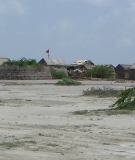
Date: Monday, June 21, 2010 - 11:42
Kharochan village in the Indus DeltaAn estimated 472 million people have likely been negatively impacted by the downstream impacts of large dams. This is the main finding of a scientific study, which was just published by a group of eminent global freshwater experts. The study documents the impacts that dams have had on some of the world's most productive ecosystems, and recommend measures that can prevent the further loss of floodplains that sustain unique ecosystems and millions of people.
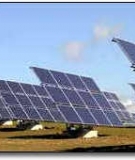
Date: Tuesday, May 25, 2010 - 12:05
John Briscoe, one of the most vocal proponents of aggressive global dam building, argues that the World Bank should take a book from China’s page and step up its support for large hydropower projects. China Dialogue, the Chinese-English internet platform which published John’s commentary, asked me for a response to this opinion piece. In my response, I argue that dams are an outdated technology, and that a smarter approach to energy development is possible – in China and internationally. Here is my commentary for China Dialogue.

Date: Monday, May 17, 2010 - 11:21
IUCNSturgeons can live for up to 100 years, and grow to 5 meters in length. The majestic fish have been around for 250 million years, and are one of the oldest inhabitants of our rivers and lakes. Because sturgeons migrate, dams cut them off from much of their spawning grounds. After they have adapted to dramatic upheavals through the ages, sturgeons are now driven to extinction by a few decades of human intervention. The Chinese Paddlefish has for example most likely been extinct by dam building in the last few years. Overall, sturgeons are the most threatened group of animals on IUCN’s Red List of Threatened Species. Eighty-five percent of them are at risk of extinction, with 63 percent of species listed as critically endangered. The new Global Biodiversity Outlook, an in-depth review of the planet’s biodiversity, shows that sturgeons stand for a global trend.
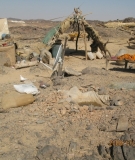
Date: Friday, May 7, 2010 - 11:27
Farmers being flooded out by the Merowe DamLOHAPThe Merowe Dam on the Nile in Northern Sudan is one of the largest and most destructive hydropower projects in Africa. Commissioned in 2009, the project affects up to 70,000 people, many of whom were displaced from the fertile Nile Valley to arid desert locations. Thousands of people were flushed out of their houses by raising waters before they were properly resettled. A German NGO and an affected person now filed a criminal complaint over the abuses in the project against the German company that supervised project construction. The complaint breaks new ground in holding transnational corporations accountable for human rights abuses on their projects.
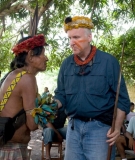
Date: Wednesday, April 14, 2010 - 08:47
James Cameron meets Kayapo leaderAmazon Watch“Huge dams are a 20th century idea in the 21st century: it's a dinosaur's idea. What’s happening in Avatar is happening in Brazil and places like India and China, where traditional villages are displaced by big infrastructure projects.”
It is not International Rivers or Amazon Watch which have just denounced large dams as “an ecological disaster.” It was the director of the Avatar movie, James Cameron himself. With his recent trip to the Amazon, the Hollywood icon left the comfortable perch of his studio and found his own Pandora – a situation, as he said, “where a real-life Avatar confrontation is in progress.”
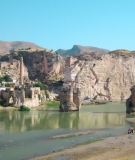
Date: Wednesday, March 31, 2010 - 09:48
Will Hasankeyf not be flooded by Chinese dam builders?peevishsoulA few years ago, Chinese dam builders and financiers appeared on the global hydropower market with a bang. China Exim Bank and companies such as Sinohydro started to take on large, destructive projects in countries like Burma and Sudan, which had before been shunned by the international community. Their emergence threatened to roll back progress regarding human rights and the environment which civil society had achieved over many years. However, new evidence suggests that Chinese dam builders and financiers are trying to become good corporate citizens rather than rogue players on the global market. Here is a progress report.
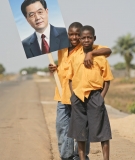
Date: Thursday, March 18, 2010 - 08:47
Christopher HerwigIf we believe the news headlines, China is propping up dictators, dispensing billions of dollars for shady deals, and destroying whole ecosystems in its quest to extract oil and minerals from Africa. Beijing’s scramble for Africa will establish a new era of resource colonialism, and intensify corruption, human rights abuses and economic dependence on the continent. The Dragon’s Gift, a new book by Deborah Brautigam, looks behind this media hype. It offers surprising insights and challenges us to take a new look at Africa’s development.

Date: Thursday, February 25, 2010 - 11:22
The Democratic Republic of Congo’s bad luck is to be rich in resources. Foreign investors are pouring billions of dollars into large extractive projects such as mines and hydropower dams. In a classic case of the resource curse, these projects are not promoting the country’s long-term development, but attract short-term profiteers, conflict, and corruption. In the latest example for this trend, the World Bank has just reported huge delays and cost overruns for the rehabilitation of the Inga 1 and 2 hydropower dams. Other projects are being swallowed by the morass of Congo’s resource curse at the same time.

Date: Friday, February 5, 2010 - 14:09
Meles Zenawi and Italy's Foreign Minister inaugurate Gilgel Gibe 2On Jan. 13, Ethiopia's Prime Minister Meles Zenawi inaugurated the Gilgel Gibe 2
scheme, the country's biggest hydropower project. "It is possible to
speed up development without polluting the environment," Zenawi proudly
declared as he cut the ceremonial ribbon. Yet this was wishful
thinking.

Date: Friday, January 29, 2010 - 15:23
Living on PandoraMarch 30, 2164. - I have spent a lot of time on Pandora lately. I have explored its verdant valleys, lush rain forests, and floating mountains. I have tried to stay away from the ferocious aynantang and aypalulukan. And I have fallen in love with the mighty rivers and waterfalls, which cascade down sheer cliffs and which you may have admired in the Avatar movie.

Date: Monday, January 25, 2010 - 11:06
Three Gorges resettlersChongqing China Three Gorges Museum"Battling with heaven is endless joy, fighting with the earth is endless joy, and struggling with humanity is endless joy," Mao Zedong once proclaimed. The Three Gorges Dam, which the great helmsman had conjured in one of his poems, is one of the manifestations of this philosophy. Nature inevitably strikes back against those who fight it. In the case of the Three Gorges Dam, we just learned that at least 300,000 more people need to displaced so that the environmental impacts can be kept under control.

Date: Tuesday, January 19, 2010 - 11:21
China's Liu Xiang on track to winning Olympic Gold in 2004www.chine-informations.com/images/upload2/Liu_xiang.jpgIn April 2009, President Obama said, "The nation that leads the world in twenty-first-century clean energy will be the nation that leads in the twenty-first-century global economy." Will China or the United States win the race for clean energy technology and future economic predominance? Here is an update with some personal impressions from Beijing.

Date: Monday, December 14, 2009 - 16:11
Construction work on China's Kamchay Dam in CambodiaMarcus RhinelanderChina counts half of the world’s large dams within its borders, and is the biggest producer of hydropower. Throughout the 20th century, Western companies helped China build up its hydropower capacity. Yet in the huge Ertan and Three Gorges projects of the 1990s, China changed the rules of the game. Companies interested in the multi-billion dollar contracts had to manufacture half the turbines and generators on Chinese soil, in cooperation with Chinese partners. The leading hydropower firms of the time – including ABB, Alstom, General Electric and Siemens – complied, and transferred their technology in the process.

Date: Wednesday, December 9, 2009 - 14:48
“I don’t care if a cat is white or black so long as it catches mice,” China’s former leader Deng Xiaoping famously commented on the role of ideology in economic development. In line with this credo, China offers foreign aid with no political strings attached. The only exception is that recipient governments must accept the One-China policy, i.e. may not recognize Taiwan. “Business is business. We try to separate politics from business”, China’s Deputy Foreign Minister confirmed in 2004.
After the World Bank and the International Monetary Fund tied their loans to the privatization of public utilities, the liberalization of foreign trade and other political conditions, China’s pragmatism came as a welcome reprieve for many borrowing governments. Yet a few days ago, Ecuador’s President protested that negotiations with China were “worse than the IMF.” What is happening?

Date: Wednesday, December 2, 2009 - 12:24
The ancient town of Hasankeyf would be flooded by the Ilisu DamWikimedia CommonsThe Ilisu Dam on the Tigris is a primary example of a dam that violates international social and environmental standards. Western financiers pulled out of the project in summer, but China is now considering filling the gap. Such support would be a huge setback for the affected communities and international civil society, and would express contempt for the environmental standards which China has helped to establish. Here is the latest.
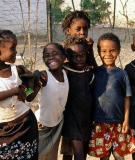
Date: Monday, November 30, 2009 - 14:43
KidsWikimedia Commons Global society depletes the planet’s resources ever more quickly. According to new data just released by the Global Footprint Network, we consume almost 50 percent more than what the Earth can sustainably provide. Arab Gulf states and the US lead the list of profligate consumers. As a consequence, we are increasingly in debt to future generations. Here are the figures.

Date: Monday, November 23, 2009 - 08:31
Hingol National ParkWikimedia CommonsPakistan’s government is currently considering building the Hingol Dam, a $400 million irrigation dam in the mountains of Balochistan Province. The project is controversial because it would impact a national park and a centuries-old temple which is revered by the region’s Hindu population. A few weeks ago, I got an e-mail from an engineering firm in Pakistan. Out of the blue, the firm offered me the contract to build the Hingol Dam and four similar projects. The offer came as a surprise because working for International Rivers, I am rather skeptical of such projects. I may pass as a dam expert, but have never built such a structure before.

Date: Thursday, November 19, 2009 - 11:23
Zipingpu DamChengDu Online, www.cdol.net/BBSScientists agree that dams can trigger earthquakes. A new research paper presents fresh evidence that the devastating earthquake which killed more than 80,000 people in China’s Sichuan Province in May 2008 was triggered by the Zipingpu Dam. This would be the world’s deadliest dam-induced earthquake ever.

Date: Tuesday, November 3, 2009 - 16:48
Steven BensonIn the next few days, the reservoir of the Three Gorges Dam will reach a level of 175 meters. After 27 million cubic meters of concrete have been poured, 39 cubic kilometers of water have been stored, 1.3 million people have been displaced and up to $88 billion have been spent, the world’s largest and most controversial hydropower project will thus be completed.
Now it is time to take stock. I have followed the Three Gorges Project since the mid-1990s, and had the chance to visit the dam site this summer. I believe the following lessons need to be drawn from the Three Gorges experience:

Date: Thursday, September 24, 2009 - 14:00
What could be nobler than being on the side of poor Africa women? Hydropower companies like to justify their dam projects – including the Grand Inga and Inga 3 dams on the Congo River – with the plight of poor women who spend hours collecting firewood every day. In reality, the poor are usually the last to benefit from such projects. Large mining companies and greedy vulture funds are already fighting over the spoils of the Inga dams.

Date: Friday, September 11, 2009 - 11:31
Earlier this year, the World Bank announced that it would scale up lending for dam projects “to maximize the strategic value of hydropower”. Yet new figures released yesterday show that in 2009, the Bank’s lending for large hydro has reached its lowest level in ten years. What is happening? Is the World Bank pulling out of large dams?

Date: Tuesday, September 8, 2009 - 08:56
Lucas the Elder CranachWhen there is a chance to push a big loan out the door, some people just can’t say no. Every World Bank President since James Wolfensohn has committed to fight the cancer of corruption. For more than ten years, the Bank has talked the talk, but has not walked the walk. In April, an internal evaluation gave the institution the lowest possible grade for its anti-corruption efforts. As if to prove the point, the World Bank is now considering support for a multi-billion dollar project which squarely violates its procurement guideline and shows all red flags of corruption: the Gibe 3 Dam in Ethiopia.

Date: Wednesday, September 2, 2009 - 08:31
Free Burma RangersAfter the army occupied their territory, 30,000 people from Burma’s Kokang Territory escaped to China’s Yunnan Province last week. The Chinese government expressed concern about the stability in the border region. It did not mention that Chinese dam builders were fanning the bloody conflict.




